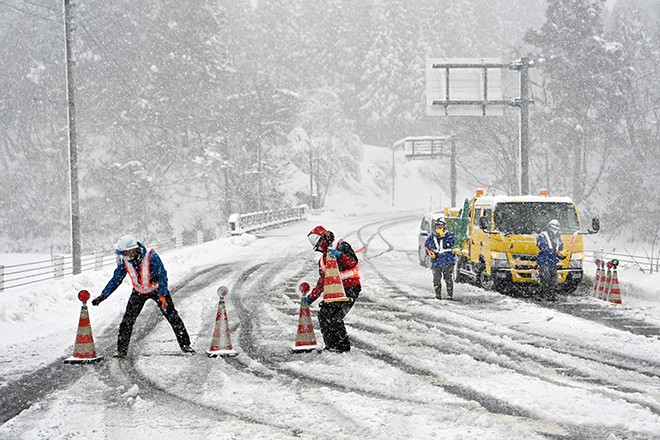A practical look at building and operating a computer-vision system that identifies studless (winter) vs. normal tires from live or recorded video.

TL;DR
Our system ingests a camera stream, detects the wheel region with a detector (YOLO), crops the tire, classifies Winter vs Normal with EfficientNet-B0, and streams results to a web dashboard and APIs in real time. Low-confidence cases default to Normal/Unknown to avoid false approvals. It runs on an edge PC (CPU/GPU), supports batch video processing with MP4 export, and is ready to integrate with gates, signage, or command centers.
Why Detect Winter Tires?
- Safety: Winter tires reduce skids and stopping distance on snow/ice.
- Operations: Manual stop-and-check creates queues and exposes staff to the cold.
- Compliance: During winter advisories many roads require studless tires.
- Goal: Fast, auditable screening while vehicles keep moving.
Where This Matters
- Primary snow regions & mountain corridors: Hokkaidō; Tōhoku (Aomori→Fukushima); Hokuriku/Chūetsu (Niigata, Toyama, Ishikawa, Fukui); Nagano/Gunma.
- Occasional snowy corridors: Mountain routes in Chūgoku & Shikoku.
- Typical sites: Expressway ramps/toll lanes, mountain passes, bridges/tunnels, depot gates, fleet yards, municipal checkpoints.
What the System Does
- Real-time screening of passing vehicles: classifies tire type without stopping traffic.
- Multiple inputs: Live camera(s), local video files.
- Two modes:
- Live: Continuous stream with overlays, alerts, and stats.
- Batch: Process uploaded/pasted videos and return a processed MP4.
- Live: Continuous stream with overlays, alerts, and stats.
- Operator experience: browser dashboard shows live video, labels, confidence, FPS/latency, and per-class counts; one-click downloads for clips/frames.
Performance & Accuracy
- Throughput: Real-time; up to ~60 FPS on GPU (resolution-dependent); smooth on CPU at lower FPS.
- Accuracy: ≈95% to 99% on a held-out internal test set (Winter vs Normal).
- Resilience: Trained on day/night and dry/wet scenes; fallback ROI logic if detection confidence is low.
- Observability: Live FPS, latency, and per-class counts; per-frame JSON with confidence + timestamps.
Privacy, Security, and Auditability
- Data minimization: Option to save only tire ROIs (crop) vs full frames.
- Configurable retention: Rolling windows per compliance policy.
- Audit trail: Timestamped decisions + downloadable clips to explain outcomes.
- Access: Dashboard behind VPN or SSO; role-based endpoints if needed.
Future outlook
- New classes: All-season, over-worn/expired, damaged tires.
- Imaging kit: Weatherproof enclosure, heaters, salt protection, optional backlighting, auto-exposure lock.
- Ops at scale: Multi-checkpoint orchestration, enterprise auth/roles, fleet dashboards.
- Public benchmarks: Standardized test protocol with published false-approval and latency metrics.
Conclusion
The Winter Tire Detection System is a real-time, dashboard-driven detector designed to screen moving traffic safely. This system helps to reduce manual checks and maintain an auditable trail of decisions. It is characterized by its simplicity to pilot on an edge PC, its ability to integrate cleanly with existing systems, and its capacity to evolve as new data and classes are added.